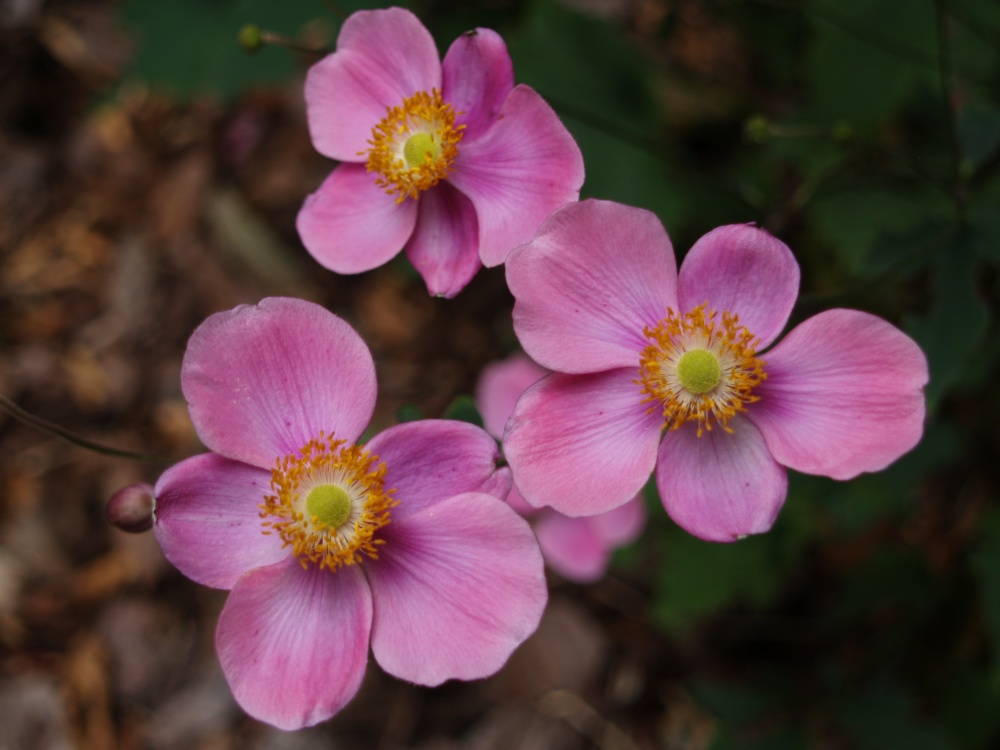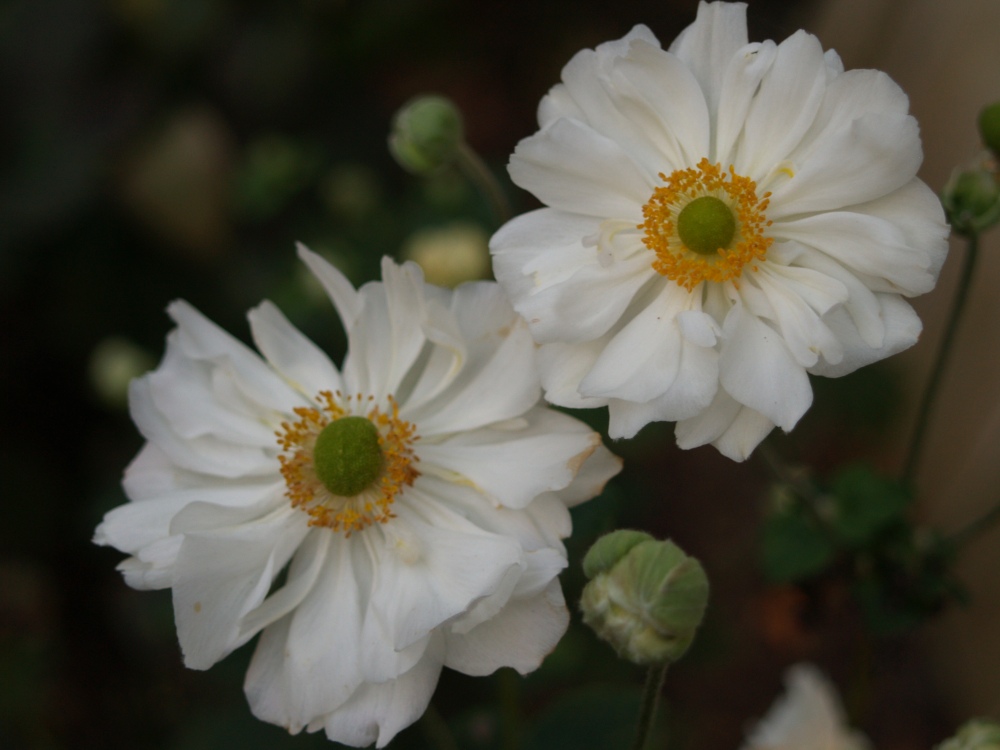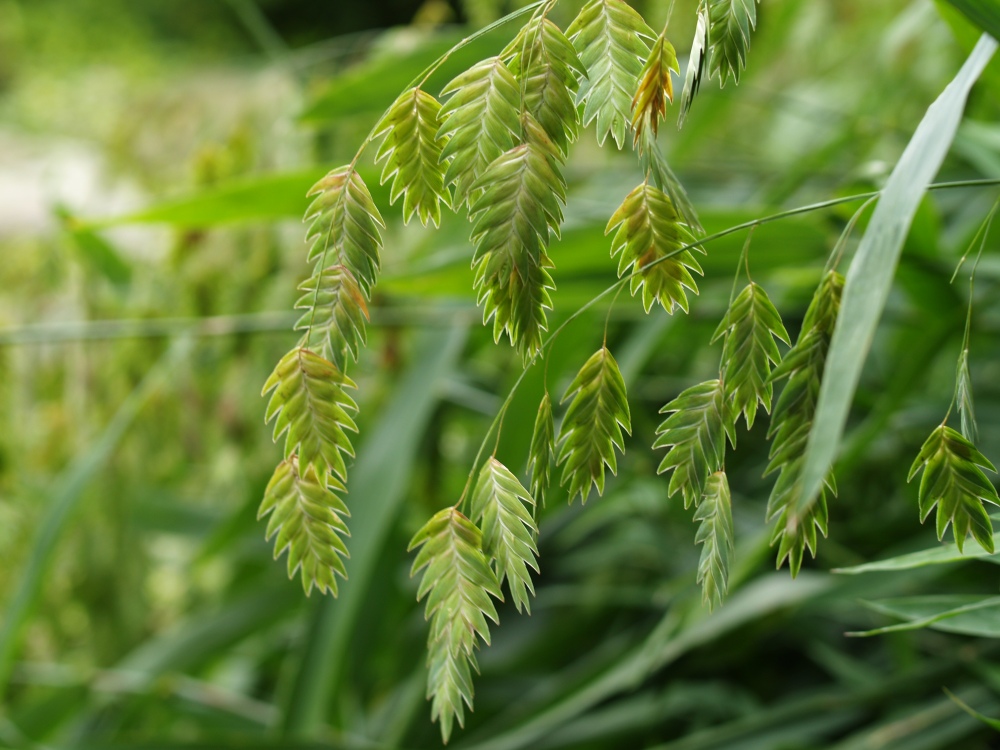In recent years the pink Japanese windflower (Anemone x hybrida ‘September Charm’, below) has flowered in August, or October, but not September. I suppose that in most years out of ten ‘September Charm’ will flower sometime in September, and this year it began to bloom with the turn of the calendar page. I learned long ago that calculating blooming times is risky business with too many variables in temperature, sunlight, and rainfall. So, why bother and who cares? They’ll flower sooner or later, and usually within a week or two of “normal”, unless it’s another week earlier or later.
In my experience the white windflowers (below) keep to a more reliable schedule, blooming a bit later than the pink, but predictably by mid September. Once you have grown windflowers, the origin of the name is quite obvious. The plants grow tall and upright, and the flower stems rise another foot or more above the foliage so that they bob to and fro in the slightest breeze. I’ve had young plants topple over in a gale, but established windflowers only lean a bit, and almost never flop so that staking is not needed. The foliage is unremarkable, and a clever gardener might figure a way to plant supporting neighbors, but mine are planted in the open and nothing much comes of it.

In the first year and second Japanese Forest grass (Hakonechloa macra ‘Aureola’, below) grows weakly, and the gardener will wonder whether the sparse clump will survive. If planted in partial shade it picks up some vigor by the third year, and after four or five years the healthy clump makes you forget that there was any bother at all. A large root division taken in mid spring will grow without skipping a beat, even if planted in a bit too much sun (that would spell the doom of a smaller plant). For my money, the larger the plant from the start the better, and I wouldn’t consider a two or three inch pot unless I was able to grow it along for another year in a transplant bed.
After gardening for forty years I’ve come to the realization that a transplant bed is nearly essential, and though I haven’t yet set one up, I’m determined to build one for the oddballs not available in the garden center that I purchase by mail order. I can’t count the number of small plants that I’ve set out in the spring that are never to be seen again. When small pots or bare roots are planted in little pockets spread out through the garden I have little chance of paying much attention to them, and it takes only a few warm days without water for them to disappear.
The soil in the transplant bed should be heavily amended with compost so that plants are easily dug in, but are also easily dug out when they’ve grown to a sturdier size . No doubt I’ll be adding to my collection of toad lilies in the spring, and along with a few spigelia, paris, corydalis, and whatever else catches my fancy, I’ll slip them into the ground in one spot where I can see the whole batch at once so that there’s some possibility that I’ll be able to watch after them. The end result will almost certainly be cheaper than paying for plants that live for a month or two (though by no fault of the nursery that supplied them).
The other grass that thrives in the shady garden requires no attention at all, except to pull seedlings that surround it in late spring each year. Northern Sea Oats (Chasmanthium latifolium, above) will grow in nearly any shade, though it resents dry shade. With a slightly moist soil sea oats grow vigorously, and I’ve found they are splendid companion plant for hostas and other broad leafed perennials. To one side of a clump of sea oats bright yellow Creeping Jenny carpets the ground, and the many thousands of seedlings that pop up are a considerable nuisance. Beneath the hosta, no seedlings, so the lesson here is not to plant ground huggers nearby, or you’ll be forced to chop the seedheads off in late autumn before they drop to the ground.
Here’s the latest video from the garden, taken a few days ago on a cool, cloudy afternoon when the bees and butterflies were taking the day off. On sunny days I often can’t get too close to flowers without risking being stung, or frightening the butterflies, but on a cloudy day they’re off doing whatever it is that they do.
I love my September charm anemones and I find their full dark green follage very attractive. I find they do better in full rather than parial shade, but they flower in both locations. August in shade and September in partial shade.
However, I have noticed that the flowers on some of the older plants are no longer as intense as they were when they first started blooming (in their second year).
Anyone have suggestions?
I’ve found that flower coloration can vary depending on the intensity of the sun when the flower opens. From day to day blooms can vary.
Otherwise, the color is hard wired into the plant’s genetics, so unless the original plant has been replaced by a seedling (which is possible with many perennials, but not likely with anemone) the change in color is due to changes in sun or shade.